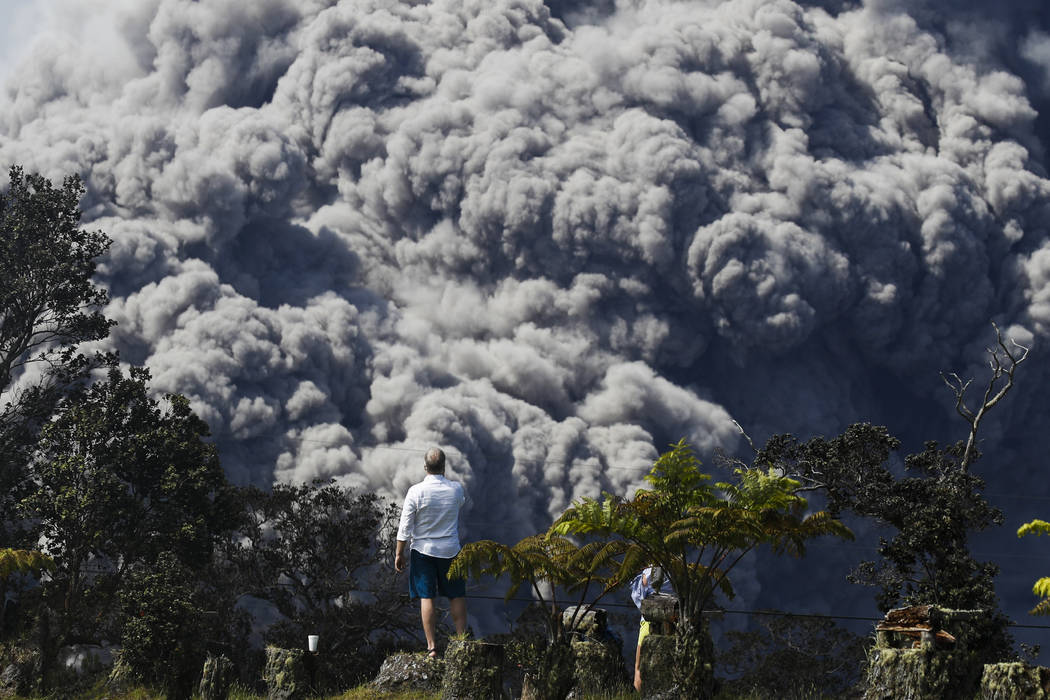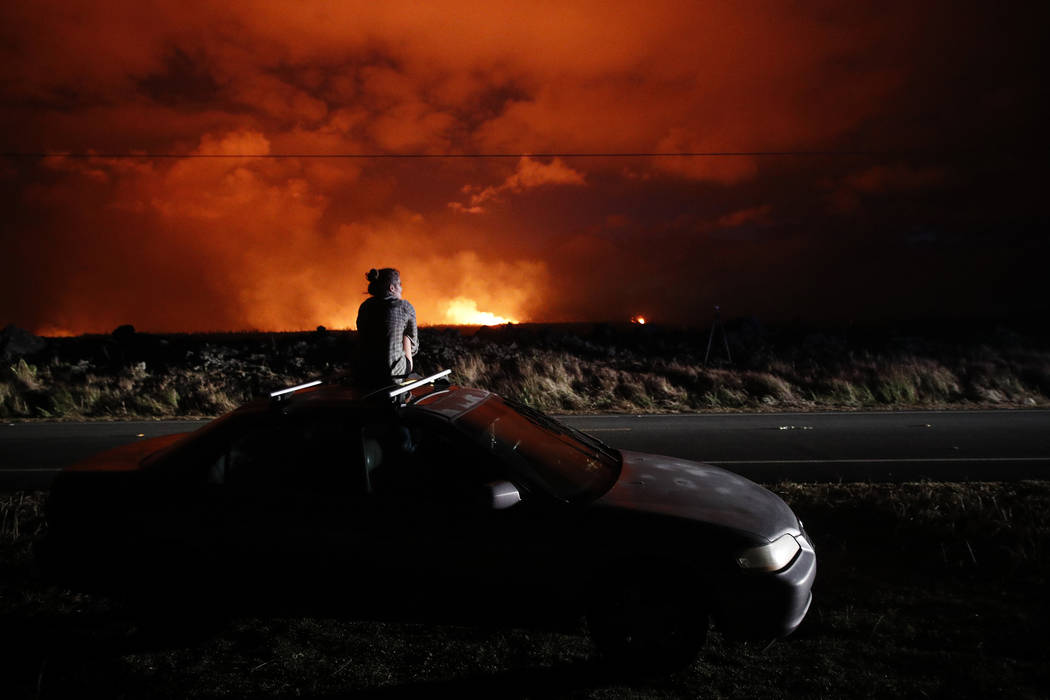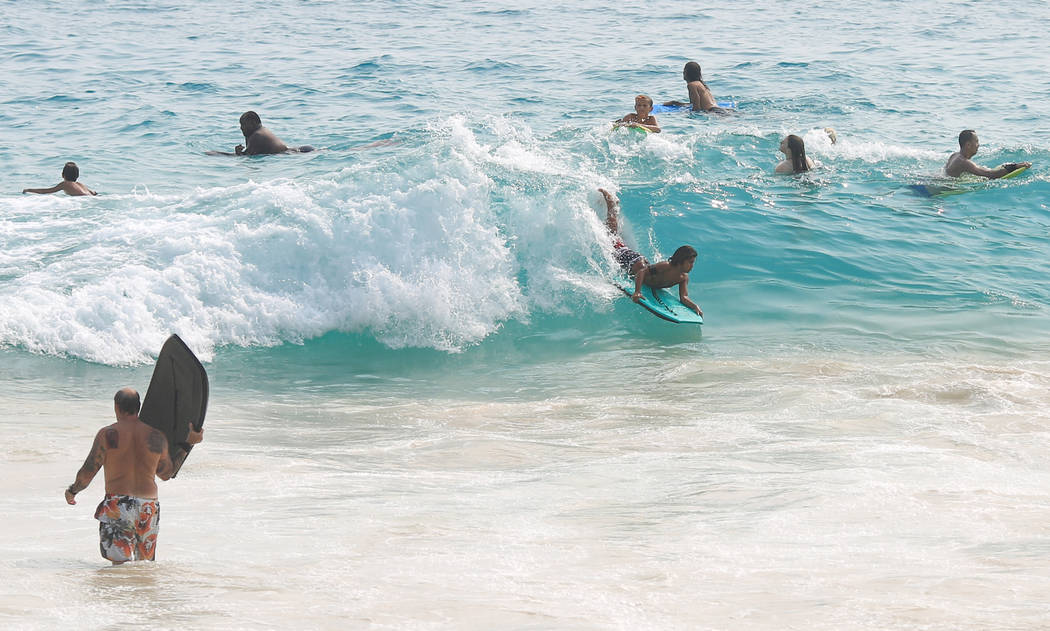Life on Hawaii’s Big Island largely unchanged, natives say










KAILUA-KONA, Hawaii — Inside the southernmost bar in the United States, Hiilani Kaawa sipped a Corona and scrolled through her phone early Monday.
A faint plume of ash hovered high overhead. But inside South Side Shaka, in the small town of Naalehu on the Big Island, Kaawa wasn’t worried.
“I think it’s more the people who were flown here, not grown here,” Kaawa said.
Kaawa, 30, was born in this town, about 60 miles southwest of the evacuation zones caused by the ongoing Kilauea eruptions.
She sympathized with the nearly 2,000 people who were forced to flee. Some of them have their homes, and hundreds are living in shelters. But Kaawa believes in Pele, the Hawaiian goddess of fire, light, wind and volcanoes.
“People see it as destruction,” she said. “I see it as creation.”
When asked if she had taken any precautions for earthquakes and ashfall, Kaawa smirked.
“Psh,” she said. “No.”
The evacuation zones are confined to a small area in the Puna region on the east side of the island, and about 5 percent of the island’s population has been affected.
Blown ‘out of proportion’
Geologists, meteorologists and health experts are analyzing the ongoing volcanic activity and evaluating safety on the island. But the reality is that, for nearly everyone on the island not in the evacuation zones, life goes on.
“This is a time to listen to the experts on-site and to trust what they are reporting and recommending,” Hawaii Gov. David Ige said in a statement Monday. “The experts are telling us there is no danger from the eruptions to anyone outside the areas that have been evacuated. There is no threat of a tsunami. Air quality is being closely studied and is of most concern in the immediate area inside where the volcanic activity is taking place.”
While scientists Monday did report record levels of “laze” — a cloud of toxic steam and fine glass particles — those levels were recorded deep within evacuation zones.
“All of Hawaii is open for business,” the governor said. “The one area that people need to avoid is lower Puna, where the eruption is ongoing.”
Stan Lawrence, owner of Orchidland Surf Shop in Hilo, the island’s largest city, said media reports have affected business. Hilo is about 20 miles from the affected area.
“I think tourists are kind of getting the wrong picture,” Lawrence said. “Kilauea’s been erupting for the last 35 years. The communities displaced is the most important thing. But there’s so many other beautiful places to visit.”
Tourists Michael Wachtel and Ali Mallison, who were visiting from North Carolina, weren’t concerned.
They spent Monday afternoon at Pu’uhonua O Honaunau National Historic Park, perusing ancient sites and enjoying the sunshine.
“The media has really blown it out of proportion,” Wachtel said. “It’s a shame. We got a motorcycle. We’ve been all over the island. Except for the spot where it’s happening, everything is totally unaffected.”
Contact Rachel Crosby at rcrosby@reviewjournal.com or 702-477-8301. Follow @rachelacrosby on Twitter.
How to help
“While several of our members have friends in the affected area, with some being evacuated, everyone is reported as safe and OK,” the Las Vegas Hawaiian Civic Club said in a statement about the ongoing Kilauea eruptions. Las Vegas, or the “Ninth Island,” is home to more than 50,000 native Hawaiians, according to the club.
The group started a GoFundMe to help those who have lost property and been displaced. Visit gofundme.com/kilauea-eruption-support-fund.













